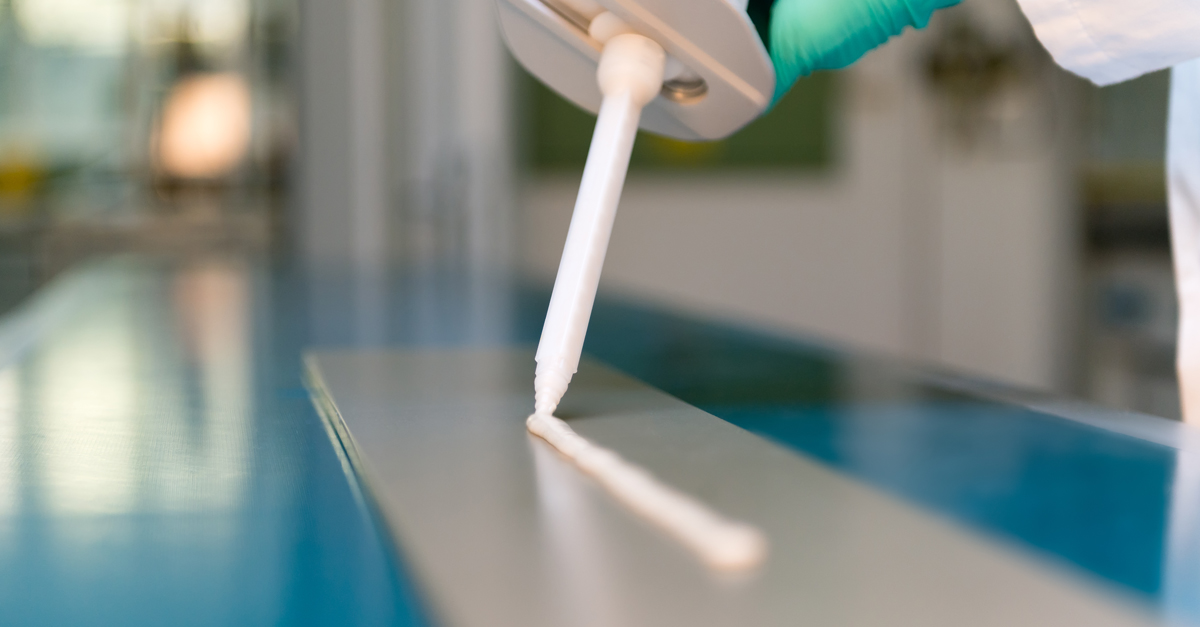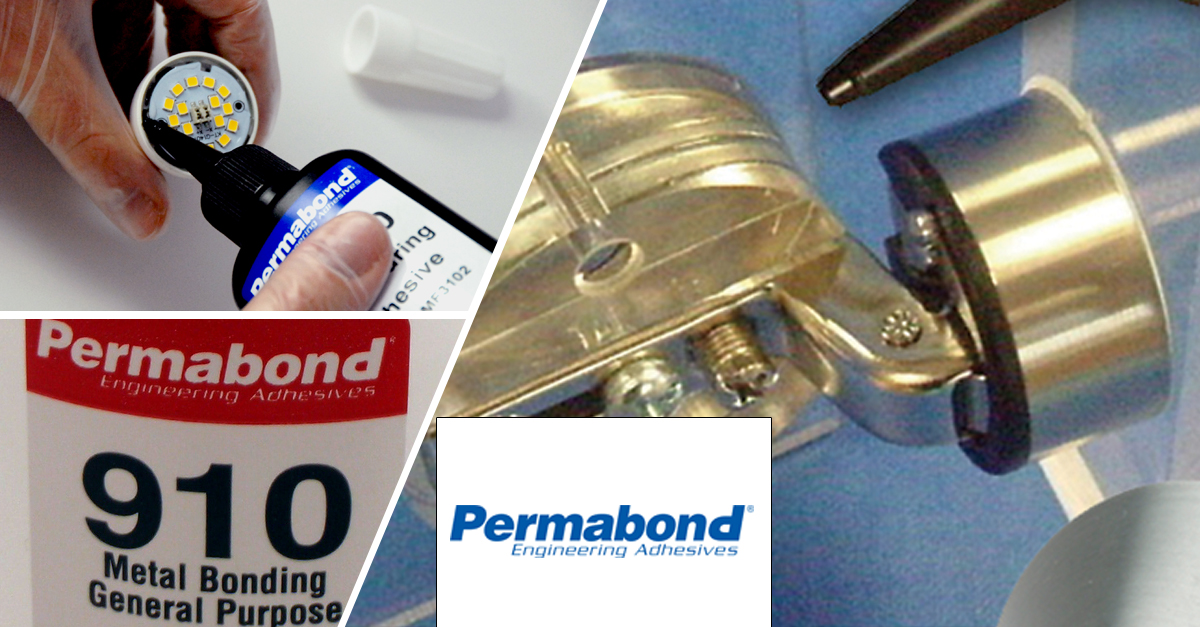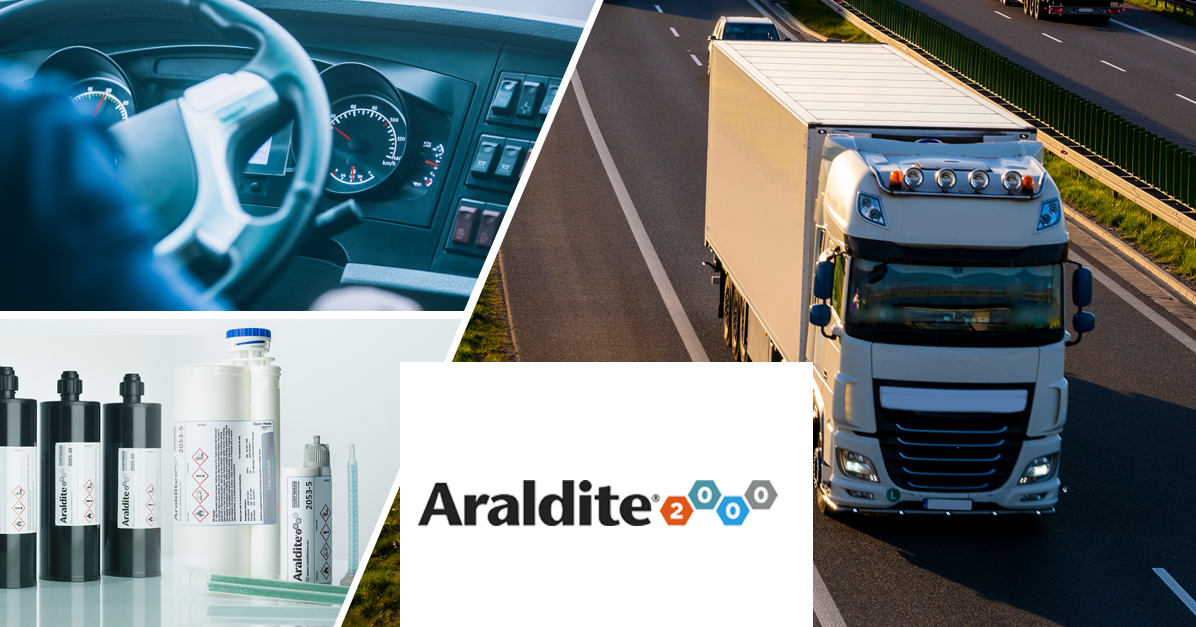Which adhesives should I use for metal bonding?
Before any bonding application, it is important not to underestimate the surface preparation of the various metal substrates to be bonded. To this end, Samaro and its partner Socomore recommend the use of Diestone DLS, a fast-evaporating, non-greasy solvent cleaner and degreaser for optimal bonding.
Types of glue suitable for metal
Choosing the right adhesive for metal is crucial to ensuring strong, durable joints. Different types of adhesive are available, each offering specific benefits depending on the needs of the application. Here are the main types of adhesive suitable for metal:
Epoxy adhesives for metal
Epoxy adhesives can be divided into 2 groups: Single-component epoxy adhesives that cure between 100 and 175°C and two-component epoxy adhesives that cure at room temperature.
These adhesives are renowned for their very high mechanical strength and excellent chemical resistance, offering the ability to form strong joints on a variety of metal surfaces. Popular products include ARALDITE® 2011 PL, a versatile two-component epoxy adhesive suitable for bonding ferrous and non-ferrous metals. Permabond ES558 is a single-component epoxy adhesive for metal surfacing, allowing welds to be replaced for an impact-resistant bond. These adhesives offer excellent adhesion and chemical resistance, making them ideal for structural bonding applications.

Cyanoacrylate adhesives for metal – “super glues”
Cyanoacrylate adhesives, also known as “super glues”, are ideal for applications requiring rapid setting. Permabond 910 is an example of a cyanoacrylate specially formulated for metal bonding. These adhesives cure in seconds when confined between two substrates with very little clearance, enabling a strong bond to be made quickly. Cyano adhesives are particularly suitable for bonding small surfaces and should be avoided when assembling large parts.

Methacrylate (or MMA) adhesives for metal
Methacrylate adhesives are appreciated for their high strength, reliability and ease of use (low surface preparation required). ARALDITE® offers a range of methacrylate adhesives suitable for a variety of applications. For example, ARALDITE® 2023 offers a long pot-life of up to 60min, while ARALDITE® 2050 and ARALDITE® 2051 offer ultra-fast setting (6min), ideal for emergency repairs and extreme conditions.
Advantages and applications of MMA adhesives
Methacrylate adhesives offer a unique combination of benefits that make them particularly suitable for marine, wind, automotive and general industrial applications.
ARALDITE® 2053 has made it the preferred choice for demanding environments thanks to its high resistance to impact, vibration and weathering. Its ability to form flexible joints allows it to compensate for material stress and movement, which is crucial in many applications.
ARALDITE® 2080 is specially designed for metal bonding. Its main selling point is the low odour it gives off during application. Up to 90% less odour than ordinary MMA, an advantage not to be overlooked when applying in confined or non-ventilated areas.
MMA adhesives are used in a variety of applications, from the assembly of automotive and marine parts to the manufacture of metal structures for infrastructure. They are ideal for metal-to-metal bonding, as well as bonding metals to other materials such as plastics, glass and composites.
Here are some examples of common applications for methacrylate adhesives in industry:
- Aerospace :
-
- Structural assembly of metal components.
- Repair and maintenance of metal aircraft.
- Assembly of accessories and components.
- Use in specific applications such as joint sealing.
- Rail :
-
- Assembly of metal structures in rail vehicles.
- Repair and maintenance of metal components.
- Fixing accessories and interior fittings.
- Assembly of modular structures.
- Marine :
-
- Assembly of ship hulls and superstructures.
- Ship repair and maintenance.
- Fixing accessories and equipment.
- Bonding of composite and metallic materials.
- Wind power :
-
- Assembly of wind turbine blades.
- Fixing metal components to towers and nacelles.
- Repair and maintenance of metal components.
- Bonding of hybrid materials.
- General industry :
-
- Assembly of metal parts in various industries.
- Repair and maintenance of metal equipment and structures.
- Fixing of metal accessories and components.
- Assembly of modular structures.
- Bonding dissimilar metals.

What you need to know about MMA for metal
When using methacrylate adhesives for metal, it’s important to consider a number of factors. Firstly, make sure you choose the right adhesive formulation based on the specific requirements of your application, whether that means fast setting, weather resistance or increased flexibility. Next, carefully follow the instructions on surface preparation and application conditions to ensure optimum adhesion. Finally, always test the compatibility of adhesives with the specific materials and environments of your application to avoid any potential problems. Because every application is different, we recommend that you contact us if you have any doubts, so that our technical experts can provide you with the right substrate for your application.